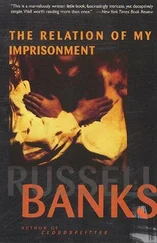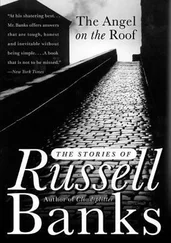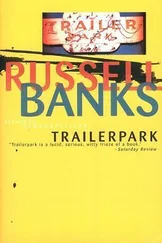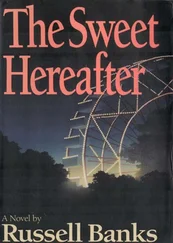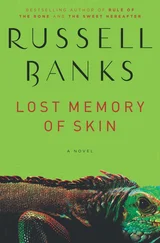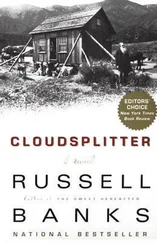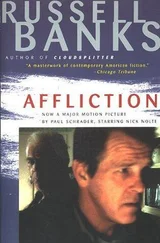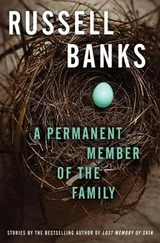That afternoon when Ham got home from school, she asked him to carry the tub out to the pigpen and leave it for them. He dipped his fingers into the gooey mass and tasted it: sweet, and a little bit sour at the edges. But he was sure that the pigs, after a daily diet of grain mash and water, would consider it a treat.
Eagerly, he dragged the heavy tub across the back yard to the end of the barn where the pigpen was located, swung back the gate, and slid the tub inside. Closing the gate, he climbed up on the fence and watched Tricksie and Anne hungrily shove their snouts into the mushy substance.
After a few moments, the animals’ rapid eating began to slow, and Ham, bored, left them alone and returned to the house. He wondered if, after such a huge afternoon meal, they’d be hungry again in the morning, and he decided yes, because, after all, they were pigs, weren’t they?
The next morning, as he always did, Ham got up, dressed, came downstairs, and while his mother made breakfast, he went out to feed and water the hens, his father’s fighting cocks, and the pigs. These were his daily chores. It was a sparkling clear morning, cloudless and dry, with a light frost that silvered the grass and made it crackle under his feet as he walked. He went to the henhouse first, completed his tasks there, and went on to the pigpen, lugging the bucket of watery grain mash he had made up in the barn.
As he rounded the corner of the barn and neared the pen, he started to call, “Soo-ee! Soo-ee! Here, pig-pig-pig!” Then he saw them. Tricksie, the larger of the two, was lying on her side near the fence, facing away from it. Anne was also lying down, a few feet beyond Tricksie. Ham thought they were sleeping, so he called again, expecting them to scramble awkwardly to their feet and rush to the trough. When they failed to respond to his second call, he thought, They must be full from yesterday’s extra meal.
But then, coming closer to the fence, he realized that both pigs, though still the same size in relation to each other, in fact had nearly doubled in size. They both seemed as large and as round as hills, and as inert.
He put the bucket on the ground, reached around for a stick, and after a few seconds found the long, pointed maple branch he sometimes used to prod the pigs away from the trough while he filled it. Reaching through the slats of the fence with the stick, he poked Tricksie on the back, but got no result. She lay there as if she were a huge pile of sand.
Again he poked her. Nothing.
He then saw a purple trickle, like a string, from the pig’s fig-shaped anus, and he knew that she was dead. He looked over at Anne and saw the same purple string dribbling down the inside of one of her hams, and he knew that both pigs were dead.
Grabbing the stick firmly, he started whacking it against Tricksie’s hindquarters, her back, her swollen belly, swinging the stick in as long an arc as he could, whacking the pig’s body all the way up to the head, which he couldn’t quite reach, so he pitched the stick into the pen, climbed over the fence and jumped down into the muck, where he picked up the stick and resumed beating the carcass, swinging the stick from over his head, bringing it down hard against the pig’s ears, eyes, and snout.
He moved to the other pig and began to thrash its belly and head, too, again and again, when at last the stick broke off in his hand. He threw the piece of wood away and stood there in the deep, dark mud, weeping, and through his clenched teeth brokenly cursing his mother, calling her stupid, stupid, stupid.
THE EROTIC MOUSE
The winter that Ham’s sister Jody was born, his mother asked him from then on when he was playing in the house to please play in the front room. He was nine that year, and because he liked building things, he took up a lot of room when he was playing and usually left a great clutter behind him. This was why his mother, still tired from having the baby and too busy with feeding and caring for her to cope with Ham’s expansive play and the resulting mess, had insisted. “You never pick up after yourself, so from now on all your puzzles and model planes, all of it, gets done in the front room!”
The front room was an unfinished first-floor room to the right of the stairway as one entered the house, opposite the living room. In an earlier time it would have been a front parlor, a room set aside for special social events only. In size and window arrangements it matched the living room. It was almost exactly twenty-feet square, with two windows on the front wall and two on the side, a door that led from the front hallway and another that led directly into the back downstairs bedroom.
A standard Cape built late in the eighteenth century, the house, essentially foursquare, was filled to the eaves with symmetries. Downstairs, one could go from any one room to the fourth by walking in a circle centered on the chimney. Upstairs, the four small bedrooms, one of which Ham’s father had converted into a bathroom, fanned out from the chimney like the arms of a Maltese cross, all four equal in size and placement. Ham’s mother and father slept downstairs in the large bedroom, and Ham slept alone upstairs — at least until his sister Jody was no longer an infant, when one of the small bedrooms would be hers.
For years, ever since Ham could remember, the front parlor had remained empty, cold and unused — except when his cousins from Massachusetts came up to visit in the summer. Then, because of the mess and the noise of the three children, Ham’s mother had insisted, as she would later for Ham alone, that they play there. Which they did, happily. It provided them with the privacy and freedom to make their noise and clutter uninhibitedly.
But now, for reasons Ham could not identify, he was reluctant to use the front room. For a long time he had avoided even entering the room. Unable to explain his reluctance to himself, he surely was unable to explain it to his mother, and all he could do was shrug off her questions and say, “I don’t know, I just hate that room.”
Eventually, however, he relented. One March afternoon he moved all his puzzles and games, his Erector set and tools, his model airplanes and his drawing pads and crayons and watercolors, into the front room, one thing at a time, slowly, as if he had been ordered to move out of the house altogether.
The following afternoon he returned home from school, and while he was sitting on the floor in the middle of the bare room, working on a balsa and tissue paper model of a P-47 Warhawk, he remembered the last time he had spent an afternoon there. It was when, the previous summer, almost a full year ago, his two cousins from Massachusetts had been “sent to the country” by their parents. Ham liked his cousins, especially the boy, Daniel, who was his age. But he also liked the girl, Virginia, even though she was older than the boys by four full years. Her parents had nicknamed her Ginger, and Ham had always assumed that it was because of her reddish hair, which somehow reminded him of what ginger looked like. She was a good-natured and attentive girl, and she never seemed to object to keeping company with two boys four years younger than she. She was able to lead them without necessarily dominating them, achieving a balance that pleased all three and, for Ham’s mother, making the chore of suddenly having to care for three children less strenuous than it might have been.
But the last time they had come up to visit, Ginger had changed. Sullen, withdrawn and aloof from the boys, she had preferred staying in the kitchen with Ham’s mother to playing in the front room or, on sunny days, out in the barn and yard with the boys. Ham saw immediately that she had changed. She spoke to him in a voice heavy with sarcasm and condescension, and she treated her brother Daniel with outright contempt.
Читать дальше

